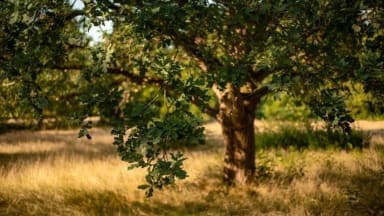
The world’s most diverse collection of living plants and 11,000 tree collection at the Royal Botanical Gardens, Kew (RGB Kew) are at risk from climate change and its impact on the range of associated environmental factors that support plant viability and health.
Rising average temperatures, summer droughts, extreme weather events and the increased volatility in the climate has lead to more variance in climate patterns and increased frequency of weather extremes which means that plants are increasingly exposed to novel environmental conditions close to or outside their physiological limitations. The ‘Planting for the Future: Kew’s Landscape Succession Plan‘ (July 2024) report highlights that a big proportion of existing species growing outdoors will be disadvantaged by environmental changes, and a shift towards the cultivation of more suitable species will be necessary.
The report follows the loss of more than 400 trees at Kew Gardens as a result of the 2022 drought, which led Kew scientists to map and chronicle the climate risk to the trees to ascertain the number that could feasibly be lost to the changing weather in the coming decades. In their research, the scientists are also considering the wider environmental flows that will alter with climate change and impact the Kew Gardens landscape, such as Thames floods, rainfall, heat, pollution, disease, pest species and biodiversity.
According to the report, around 50% of the 11,000 trees found on Kew’s 320-acre London site may be at risk by 2090. These could include British natives such as English oak (Quercus robur), common beech (Fagus sylvatica), silver birch (Betula pendula) and holly (Ilex aquifolium) which the scientists explain may be vulnerable to warmer temperatures and longer dry spells. The research also predicted that in 2090, 45% of Kew’s woody plant collections will be at the edge of their known range, and 9% outside of their known range.
As part of their ‘Succession Plan’, RGB Kew has proactively started replacing vulnerable trees with species currently found in warmer countries in southern Europe, Asia and Central America, such as the Iberian alder (Alnus lusitanica), native to Portugal and Spain; Farges’ fir (Abies fargesii), endemic to central China; cherry hackberry (Celtis cerasifera), native to China, Myanmar and Tibet; Montezuma pine (Pinus montezumae), native to Central America; and spoon oak (Quercus urbani), native to Mexico. That said, the scientists have also said that they do believe some native species, such as oak and birch can still be resilient if the seeds are sourced from countries with warmer and drier climates – which RBG Kew scientists are already working on collecting seed from trips to countries such as Romania and Serbia.
RBG Kew scientists warn that there is an urgent need for succession planting plans need to be adopted across the country to protect the UK landscapes for the future. That is, for the conservation of plants and trees, but also for the myriad of organisms that rely on these critical habitats as these impacts will affect resident birds, bats, terrestrial mammals, reptiles, amphibians, invertebrates and associated fungi.

